
Here’s the 2025 Giro d’Italia guide. You’ll find all the stage profiles together on one page, along with concise preview of each day…
…as well as explainers on the rules for the mountains and points competitions; TV guide and more.

Route summary
Last year’s route was explicitly eased twice over to tempt Tadej Pogačar: reduced vertical gain of 43,000m and shortened stages averaging 172km per day (excluding TTs and the Rome stage), down from the 50,000m or more and 190km days. This year’s climbing jumps back up towards the norms but the average distance only goes to back up to 179km so its as mountainous as ever, or even than ever on a per kilometre basis and has few time trial kilometres.

This year’s route has not been created for Wout van Aert – he is not going to win overall – but the opening week is perfect with the hilly sprints and the time trial too, stage wins and the maglia rosa await.
The curiosity of the course is the lack of summit finishes, there are just two and neither Stages 7+16 is big either. Will riders make long range moves before, or sit tight? Precedent in recent years says the preference is to wait for as long as possible and hope others fall away but the answer partly depends on the rider…
Stage 1 – Friday 9 May
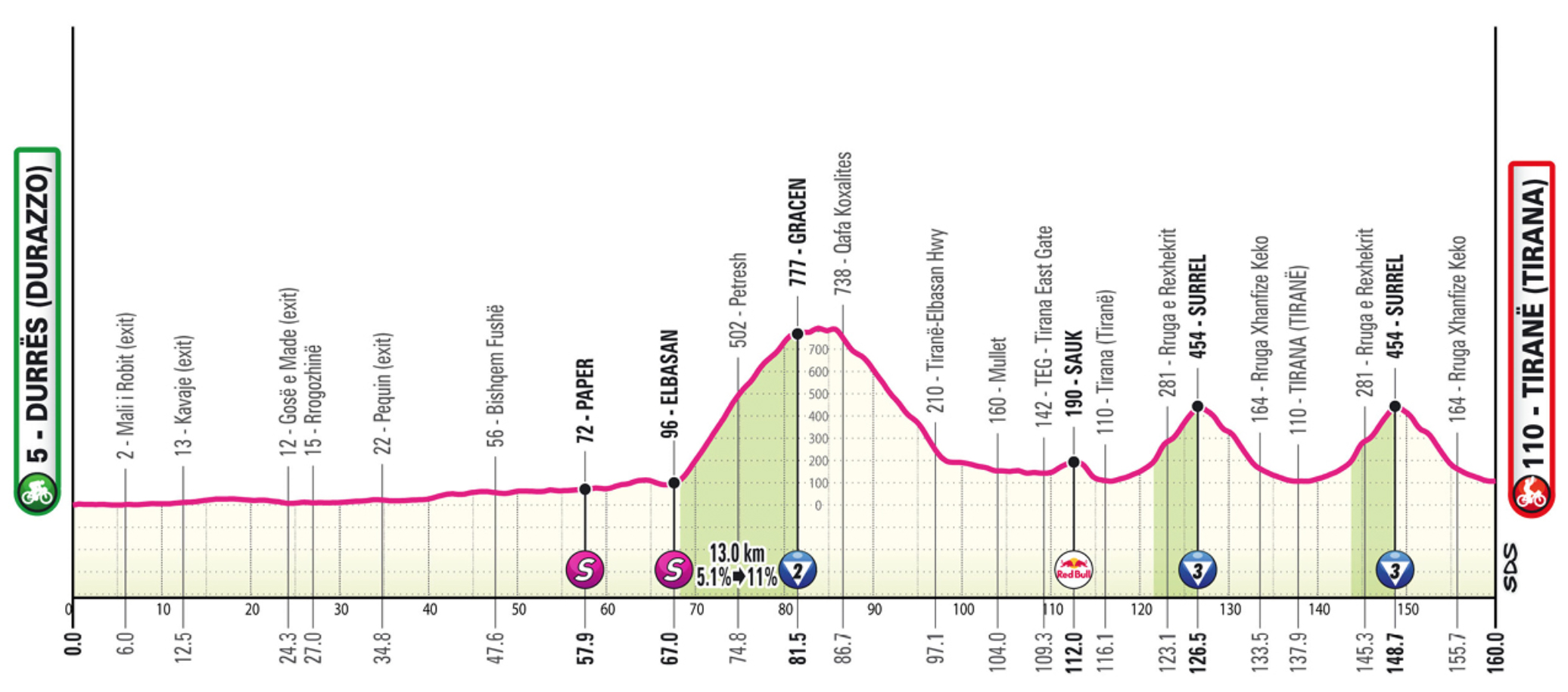
Stage 1 starts on the coast to project images of beach resorts before heading inland and it’s mountainous, the mountains point at Gracen is a long climb and sufficient to eject some sprinters before crossing to the Qafa Koxhalites, qafa is the local word for a mountain pass. Then come laps in Tirana with more climbs. Wout van Aert in pink?
Stage 2 – Saturday 10 May

A time trial in downtown Tirana, the capital city. It’s big bulevardi as they say in Albanian and the climb mid-stage is a bigger boulevard still.
Stage 3 – Sunday 11 May

It’s an election day in Albania. This passes around Mount Çika, the highest peak and takes in the Llogara pass. The stage sets the scene for the Giro’s course design with big climbs often an hour from the finish.
Stage 4 – Tuesday 13 May
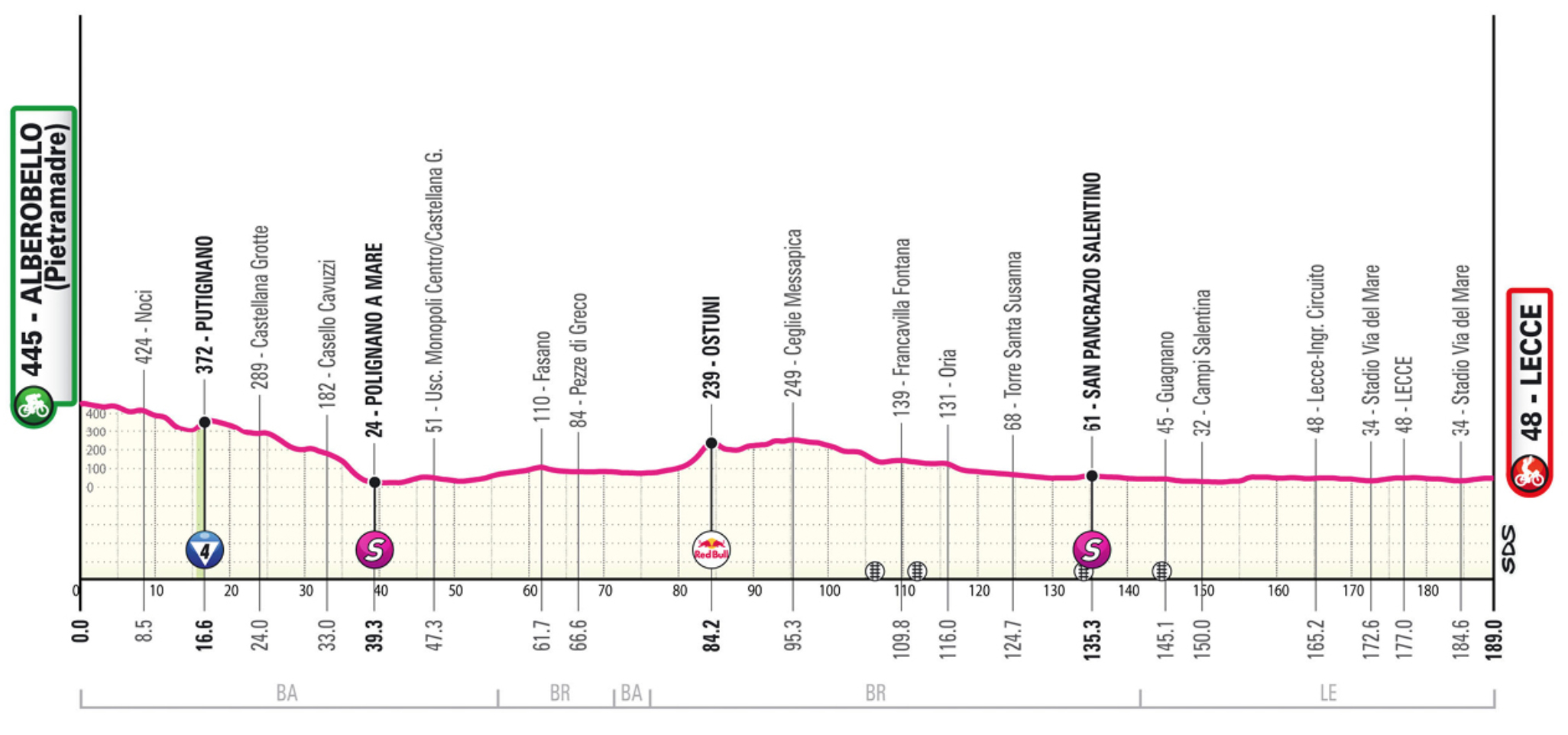
After the ferry to Bari, a day for the sprinters to Lecce in the heel of Italy.
Stage 5 – Wednesday 14 May

Matera is back. This featured more recently in 2020 when Arnaud Démare supplied one of his best wins in the uphill sprint. The difference this time is the sapping climb to Montescaglioso, a much hillier approach.
Stage 6 – Thursday 15 May
A start in Potenza, the town that’s so hilly they use giant escalators as public transport and it’s uphill via the unmarked climb of the Valico di Monte Romito. It could be enough to launch a breakaway but the course flattens as the race returns to Napoli for the fourth year in a row.
Stage 7 – Friday 16 May
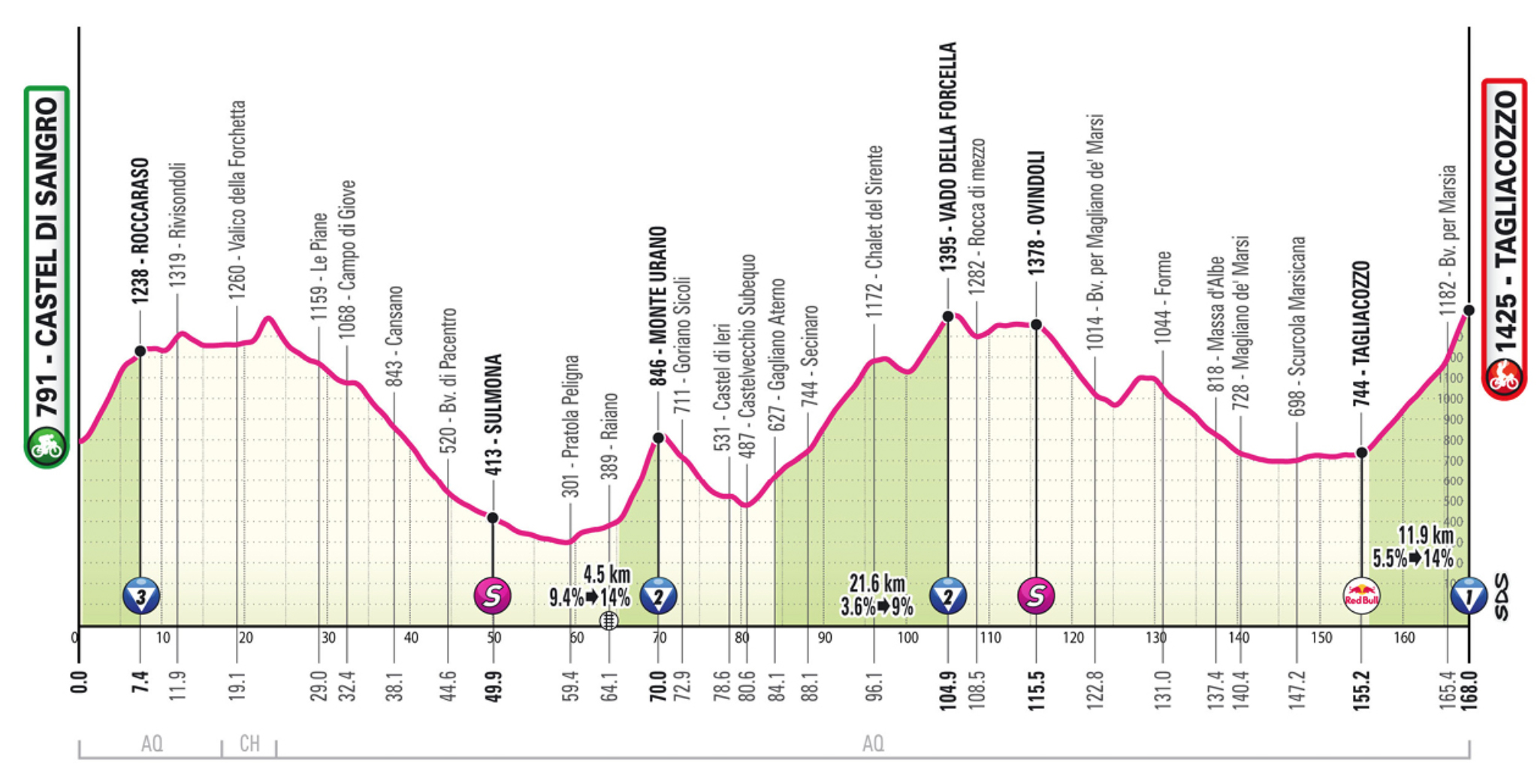
Plenty of familiar roads with a start in Castel di Sangro to climb to Roccaraso and a day in the Apennines with 3,800m of vertical gain. Tagliacozzo says the finish but this is towards Marsia on the slopes of Monte Bove above the town. Squint at the profile above and you can see the final 3.6km are steep, it’s a real summit finish… one of only two.
Stage 8 – Saturday 17 May
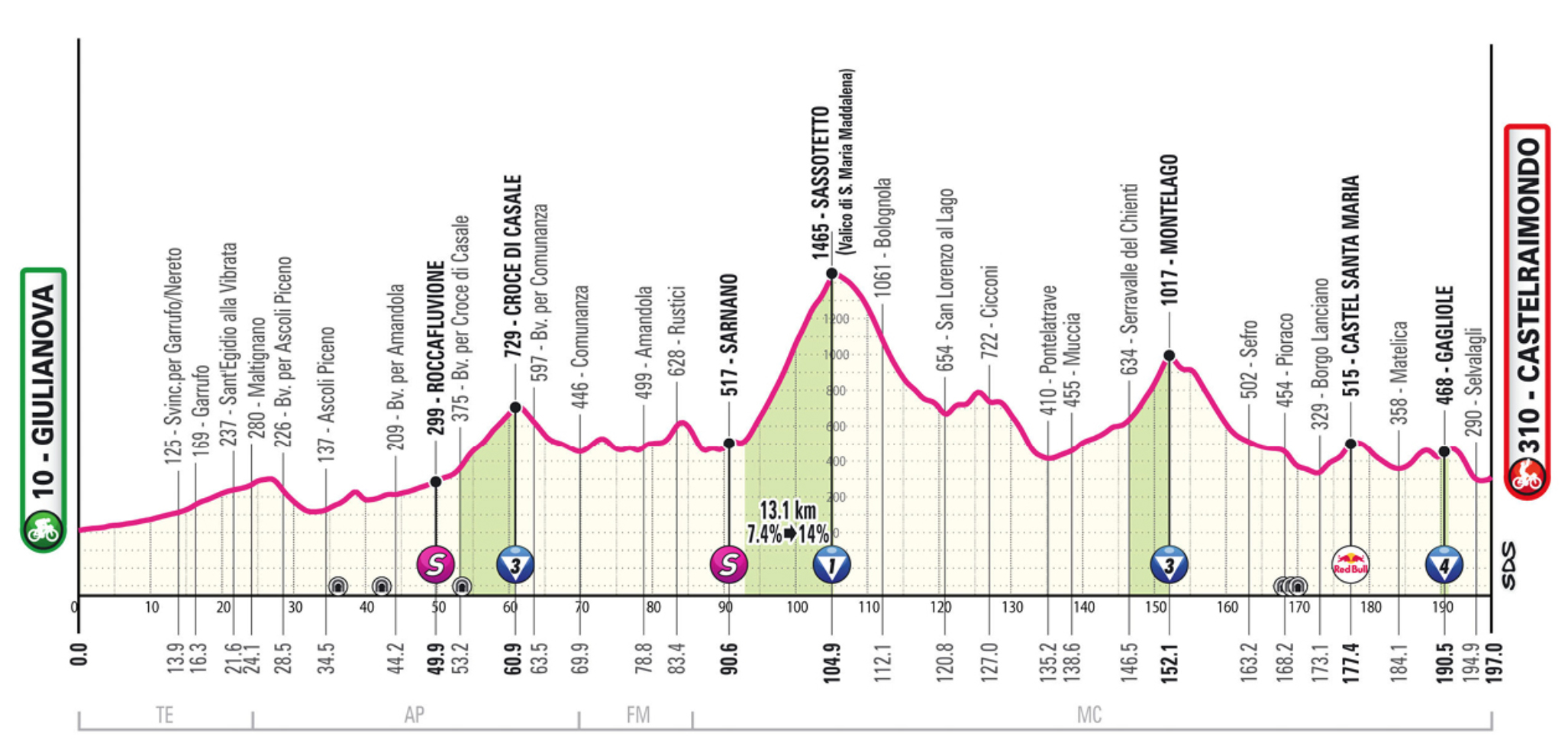
3,500m of vertical gain so almost as much climbing as the previous day but this time scattered throughout the day with unmarked climbs and surprises, for example the last 4th category climb is a brute of a ramp. Castelraimondo is a regular haunt for Tirreno-Adriatico and the finish here uses plenty of twisty backroads.
Stage 9 – Sunday 18 May

The gravel stage with sterrato from the Strade Bianche and some shared sections with Monteaperti and Pinzuto in the finish (but not le Tolfe) before climbing into Siena and a finish on the Piazza del Campo. As ever this a crucial stage because of the fear something can go wrong.
Stage 10 – Tuesday 20 May

This comes after a rest day. There are the hills on the horizon but they stay there as this sticks to the flat for a 28km time trial in Tuscany. With this stage done that’s it for the time trials. 2025 will see the fewest amount of time trials across all grand tours for 50 years or in modern day course design.
Stage 11 – Wednesday 21 May

Away from the beaches and into the Garfagnana to Alpe San Pellegrino which despite the name is the highest village in the Appenines, not the Alps. Either way it’s a brute of a climb with 14km at 8.7% average and the upper part with long ramps at 12-13%. The rest of the stage is hilly but not as steep and the 12% section for the final climb, perhaps in the inside of a hairpin bend?
Stage 12 – Thursday 22 May
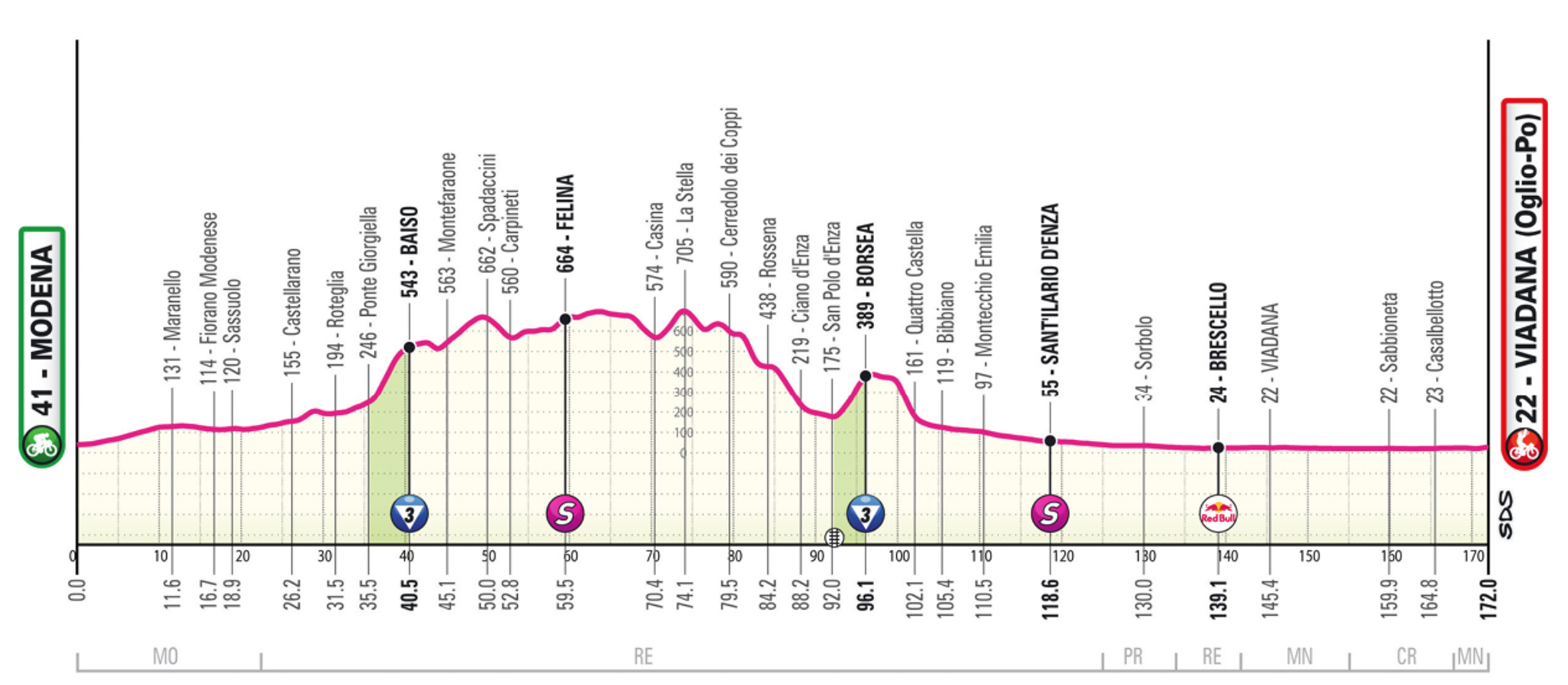
A day for the sprinters and not just on the plains of the river Po but on its banks.
Stage 13 – Friday 23 May

A ride into the Veneto and the highlight if the finish is in Vicenza, the graphics above omit to mention it is on the Monte Berico climb, and tackled twice here. Philippe Gilbert won ahead of Alberto Contador here in 2015, it’s that kind of finish.
Stage 14 – Saturday 24 May
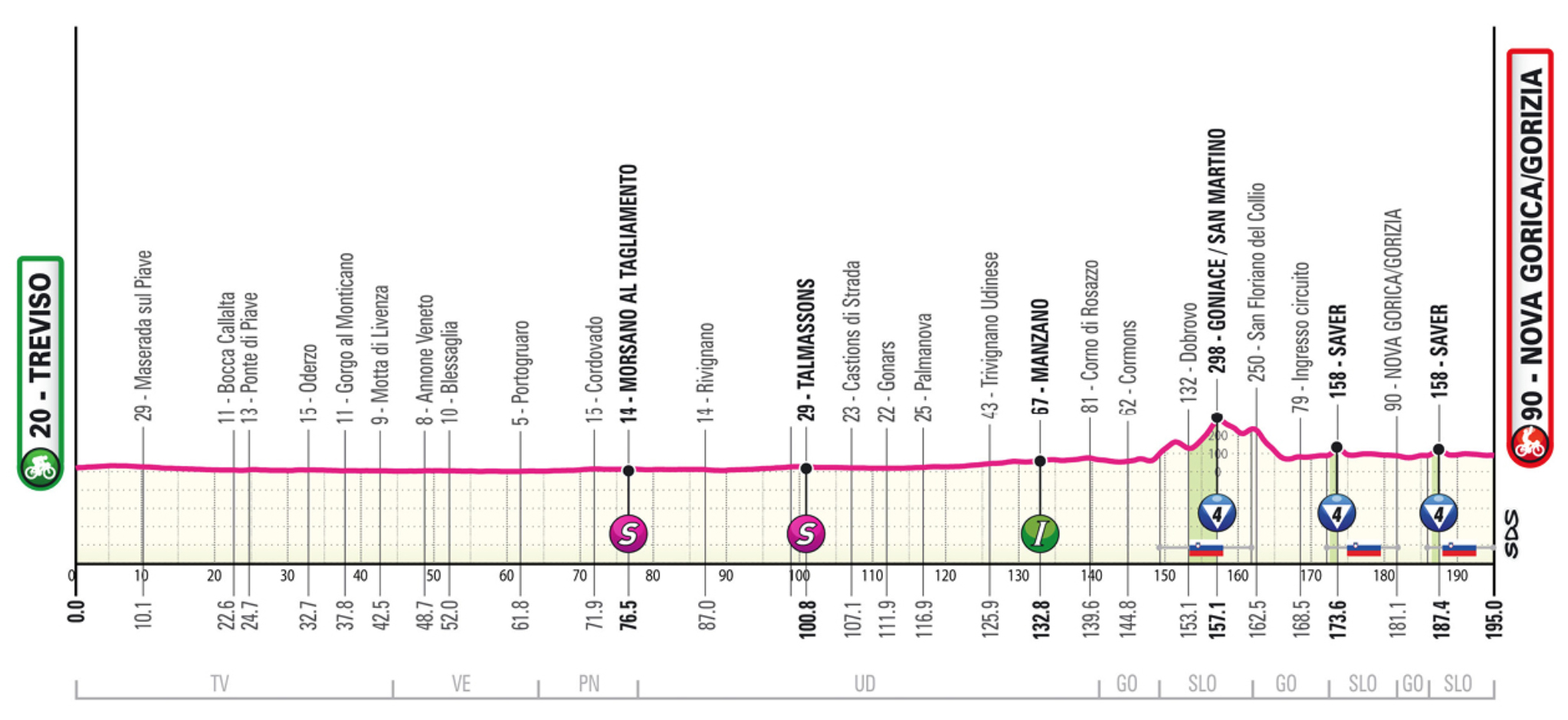
Sprinters’ day with a visit to Slovenia. If you want to troll an Italian call this the “wine stage” because of the Slovenian vineyards around Nova Gorica. But the climb at Saver is sharper than it looks and so this isn’t a Giro for the dragster sprinters.
Stage 15 – Sunday 25 May

Monte Grappa and the Asiago plateau. The key word here is “plateau” because there’s a 28km section across the top to the finish for the longest stage in the race. It’s very similar to the 2017 stage won by Thibaut Pinot where Monte Grappa featured but the finish saw a frantic chase across the plateau where Nairo Quintana extended his overall lead by a few seconds over Tom Dumoulin the day before the final time trial.
Stage 16 – Tuesday 27 May

A big day in the Alps yet without any big climbs, 4,900m of climbing but without little time spend above 1,000m altitude. The San Valentino pass is just long at 17km and most of the time a steady road up to the pastures high above Lake Garda.
Stage 17 – Wednesday 28 May

The Mortirolo stage. First comes the Tonale, a big transport artery and a steady climb. Next the Mortirolo is climbed the “easy” side from Monno and, despite roadworks to enable it, no “direttissima” road that goes straight up and so the regular version as before.
After the hectic descent it’s the long valley road up to Bormio but the route turns off this to climb to Le Motte, an old fort and as you might imagine this sits high above the valley, it’s a proper climb for a final sort-out.
Stage 18 – Thursday 29 May

One for the sprinters? Yes but by now a tired peloton might have more of a struggle, especially as desperate teams launch moves to try and salvage a result.
Stage 19 – Friday 30 May

The tappone with 4,950m of vertical gain, the most in this year’s edition. Alas last time the Giro visited the Aosta valley things turned to farce. In 2023 the peloton was worried about the state of the road on a climb in Switzerland later in the stage and the compromise was to skip the first climb in Italy… while still tackling the Swiss one. The story is longer but the missed start infuriated local politicians, minutes from council meetings recorded this. But the Giro is back, presumably a sweetened deal on the hosting fees. We get a tour of the region with the second-only ever ascent of the very tough Tzecore, the sort of climb you can ride up and think you’re on a bad day but it’s actually just the relentless pitch. Then two more steady climbs in Saint-Pantaléon and Joux familiar to riders who’ve done the Giro… Ciclistico della Valle d’Aosta, the U23 stage race held every summer. Once again the climbing eases before the finish with ride over to Champoluc.
Stage 20 – Saturday 31 May
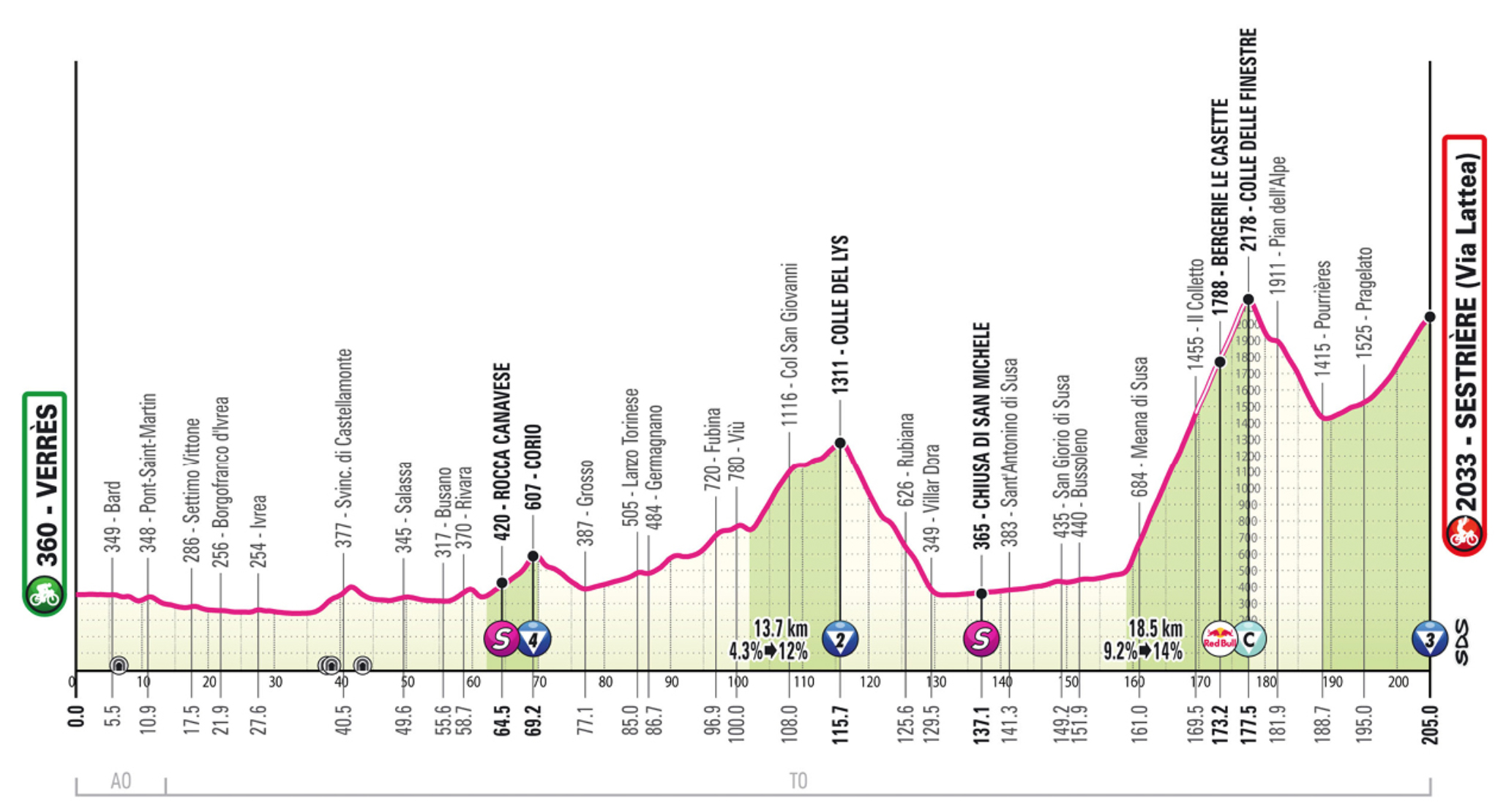
The Finestre to settle things. A ride out of the Aosta valley first and then across the Canavese foothills where the late Gianni Savio would house his latest imports. The Colle del Lys looks small but it’s a proper Alpine climb even if there’s time to recover for the Finestre.
The Finestre climb (more details here) is a 21st century addition to the Giro, first used in 2005 after it was partially paved. The gravel gets the headlines but it’s road-bike friendly, don’t expect lengthy “gravel tech” articles on the morning of the stage. The Finestre is almost 19km long and averages over 9% making it an hour long ascension and one of the toughest in the Alps all around. It’s packed with hairpins, 30 in a 3km stretch which matters for the concertina effect, being just a few places back can cause whiplash and cost energy, just ask Simon Yates. Once over the top the descent is paved and the route picks up the main highway to Sestriere.
Stage 21 – Sunday 1 June
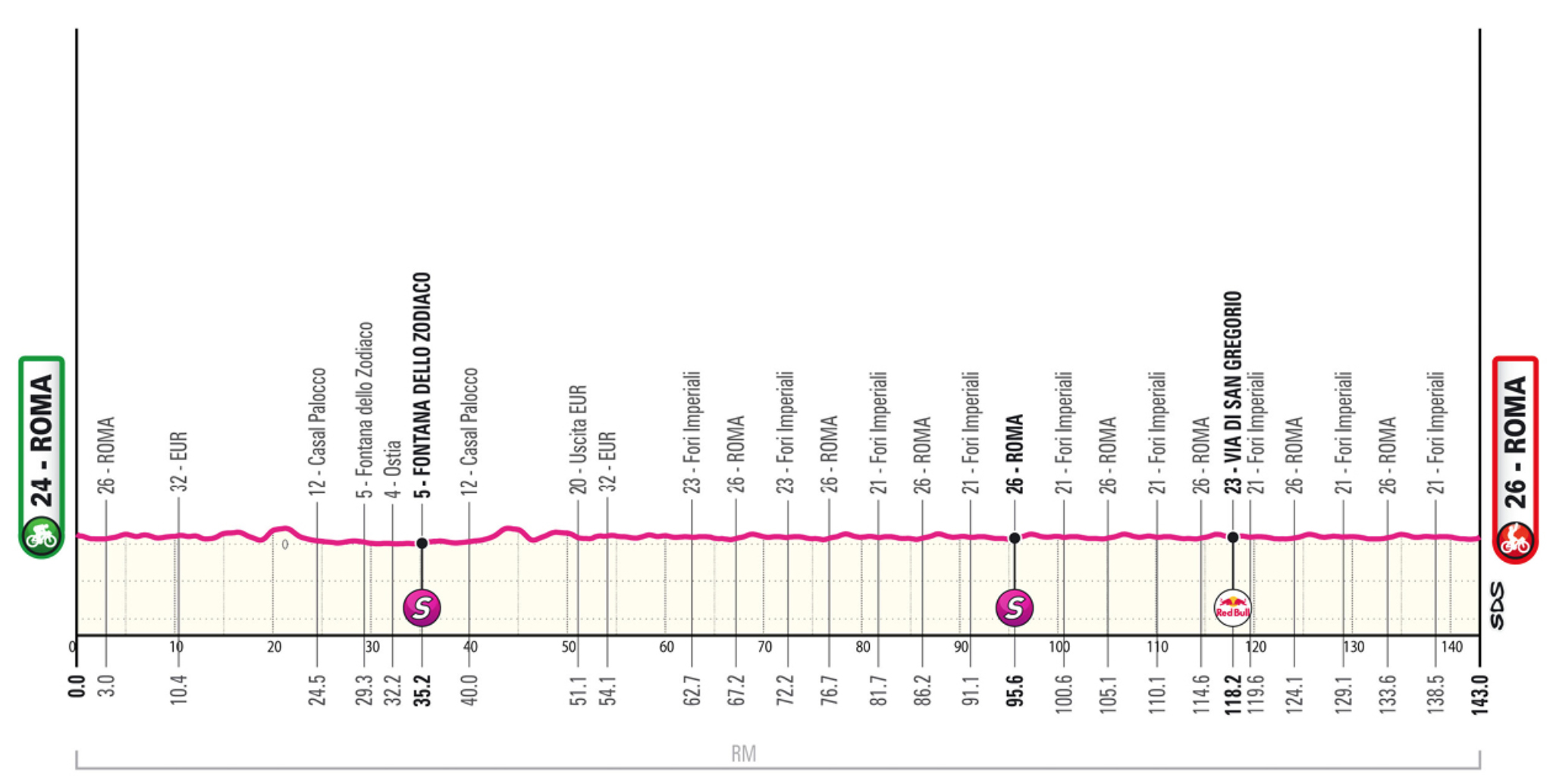
A fixture now, the stage to the coast and back via the Eur business district before laps around the city of Rome.
The Jerseys

There are four jerseys in the race: pink, cyclamen, blue and white.
Pink: the most famous one, the maglia rosa, it is awarded to the rider with the shortest overall time for all the stages added together. As such, they have covered the course faster than anyone else. It is pink because the race has been organised by La Gazzetta Dello Sport, a newspaper printed on bright pink paper. It is sponsored by Iuman, an underwear brand.
There are time bonuses available on all the stages except the time trials:
- 10-6-4 seconds for the first three riders on each stage (excluding time trials)
- 6-4-2 seconds at “Red Bull” intermediate sprint, look for the logo in a green circle on the stage profiles
Cyclamen: the points competition. Riders score points at both of the intermediate sprints per day and at the finish line. The allocation of points depends on the stage in question, they are categorised with the typical sprint stages offering more points in a bid to place the purple-toned jersey on the shoulders of a sprinter who can handle arithmetic. The maglia ciclamino is sponsored by Be It, a Made in Italy marketing campaign.
-
- Category A+B stages (Stages 4,5,6,12,13,14,18,21) offer points for the first 15 riders at the finish: 50-35-25-18-14-12-10-8-7-6-5-4-3-2-1
- Category C stages: (Stages 1,3,8,9,11) offer points for the first 10: 25-18-12-8-6-5-4-3-2-1
- Category D+E: (Stages 2,7,10,15,16,17,19,20) offer points for the first 10: 15-12-9-7-6-5-4-3-2-1
- At both of the intermediate sprints there are points for the first five: 12-8-5-3-1
Blue: the mountains jersey. It is sponsored by Banca Mediolanum, a bank. There are five categories of climb:
- 15 fourth category climbs: the first three riders crossing the top of the climb win 3-2 and 1 points respectively
- 14 third category climbs: the first four riders over the top get 9-4-2-1 points
- 13 second category climbs: first six riders get 18-8-6-4-2-1 points
- 11 first category climbs: the first eight riders get 40-18-12-9-6-4-2-1 points but if it is also the stage finish then 50,24,16,9,6,4,2,1
- CC or Cima Coppi: a special award, the “Coppi Summit” for the highest point of the race. This year it is the Finestre on Stage 20. The first nine win 50-30-20-14-10-6-4-2-1 points
White: for the best young rider, this is awarded on the same basis as the pink jersey, except the rider must be born after 1 January 2000, ie aged 25 or under. It is sponsored by Conad, a supermarket.
Now a rider can’t wear two jerseys at once, they’d get too hot and the sponsors wouldn’t get the exposure they’ve paid for. So if a rider leads several classifications, they take the most prestigious jersey for themselves and the number-two ranked rider in the other competition gets to wear the other jersey. For example if a rider has both the pink jersey and the blue mountains jersey they’ll wear pink whilst whoever is second in the mountains jersey will sport blue jersey. The hierarchy is pink > points > mountains > white.
There are also other prizes and in-race competitions such as the Red Bull competition which is separate to the points competition but there are also 15-8-5-3-1 points at this point each day and the leader wears a special number and goes on the podium each day. The fuga (“breakaway”) prize for the rider with the most kilometres in the breakaway as long as the group is no bigger than 10 riders and they start counting if a move lasts more than five kilometres. There’s a daily combativity prize and a team prize too.
Time cuts
All riders have to make the time cut each day to stay in the race and this is a function of the stage type and average speed:
- Stages 4,12,18,21: the winner’s time plus 7% if the average speed is less than or equal to 40 km/h; 8% of the average speed is between 40 and 45 km/h; 10% if the average speed is over 45 km/h
- Stages 5,6,13,14: the winner’s time plus 9% if the average speed is less than or equal to 37 km/h; 10% of the average speed is between 37 and 41 km/h; 11% if the average speed is over 41 km/h
- Stages 1,3,8,9,11: the winner’s time plus 11% if the average speed is less than or equal to 35 km/h; 12% if the average speed is between 35 km and 39 km/h; 13% if the average speed is over 39 km/h
- Stages 7,15,16,19: the winners’ time plus 16% if the average speed is less than or equal to 30 km/h; 17% if the average speed between 30 km/h and 34 km/h; 18% if the average speed is over 34km/h;
- Stage 17: the winners’ time plus 19% if the average speed is less than or equal to 30 km/h; 21% if the average speed between 30 km/h and 34 km/h; 22% if the average speed is over 34km/h;
- For TT Stages, the winner’s time plus 30%
Three and Five Kilometre Rule
Anyone with a mechanical or crash within the final three kilometres can get the same finishing time as the group the were with at the time of the incident on Stages 1,6,8,11,12,15,17 and 19 while it applies within the final five kilometres for Stages 3,4,14,18 and 21.
Bunch sprint time gaps
The protocol for time gaps in bunch sprints applies for Stages 4,6,12,18 and 21.
The unmissable stages
Anything can happen during the Giro but there are some stages that matter more than others, some suggestions for the must-watch days:
- Stage 3: see what Albania looks like
- Stage 7: one of only two summit finishes, will tell us plenty
- Stage 9: the gravel day on the strade bianche
- Stage 16: up and down all day in the Alps
- Stage 17: the Mortirolo but far from the finish
- Stage 19: the tappone, the biggest mountain stage
- Stage 20: the day after the biggest day with the Colle delle Finestre
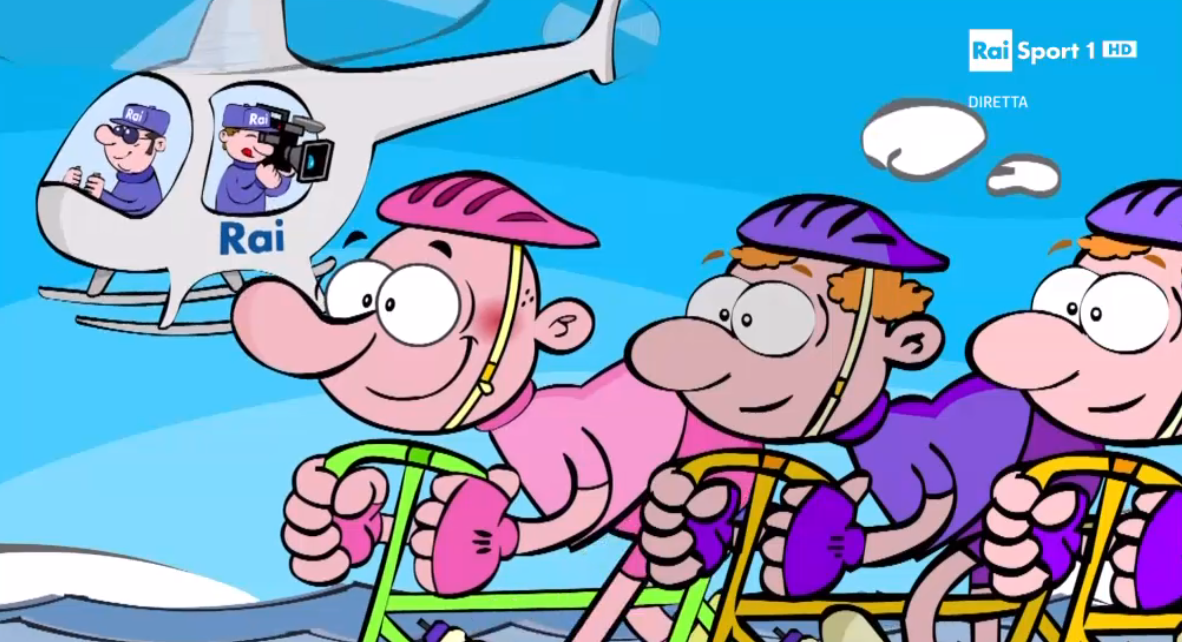
TV
All stages will be broadcast live from start to finish. Host broadcaster RAI offers the richest coverage with experienced commentators as well as two roving reporters on motorbikes to add extra info.
If you want English coverage, there’s Max/Eurosport/TNT, in the US it’s on Max, Flobikes for Canada, Australia SBS; for Japanese coverage see J-Sports.
The timing varies but as a rule the finish is expected for around 5.15pm CEST each day.

No intergiro this year?
It’s the Red Bull thing, time bonuses and a separate mini points competition.
Got it. Thanks!
Roglic. With little competition.